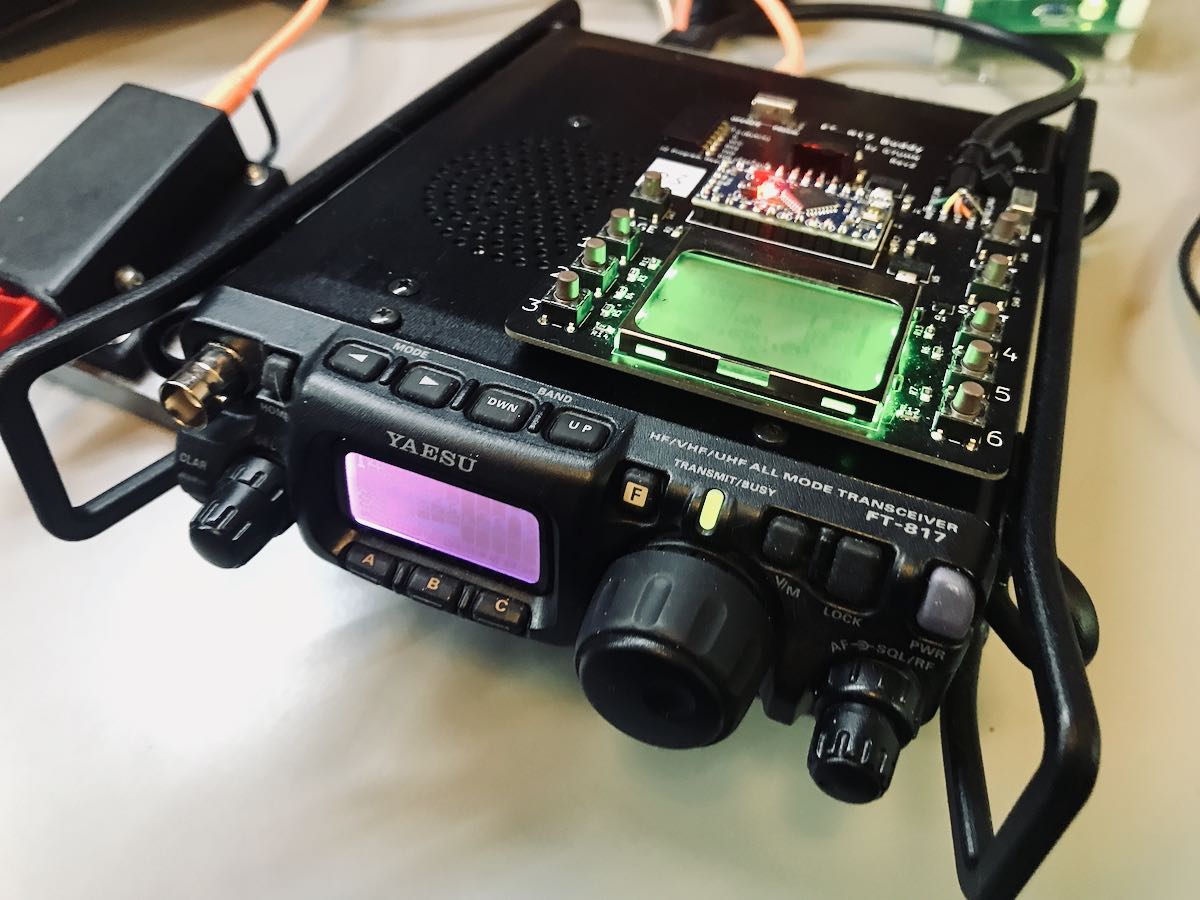 Last August, SWLing Post contributor, Andy (G7UHN), shared his homebrew project with us: a genius companion control display for the venerable Yaesu FT-817 general coverage QRP transceiver.
Last August, SWLing Post contributor, Andy (G7UHN), shared his homebrew project with us: a genius companion control display for the venerable Yaesu FT-817 general coverage QRP transceiver.
Andy’s article caused me (yes, I blame him) to wax nostalgic about the popular FT-817 transceiver. You see, I owned one of the first production models of the FT-817 in 2001 when I lived in the UK.
At the time, there was nothing like it on the market: a very portable and efficient HF, VHF, UHF, multi-mode general coverage QRP transceiver…all for $670 US.
In 2001? Yeah, Yaesu knocked it out of the ballpark!
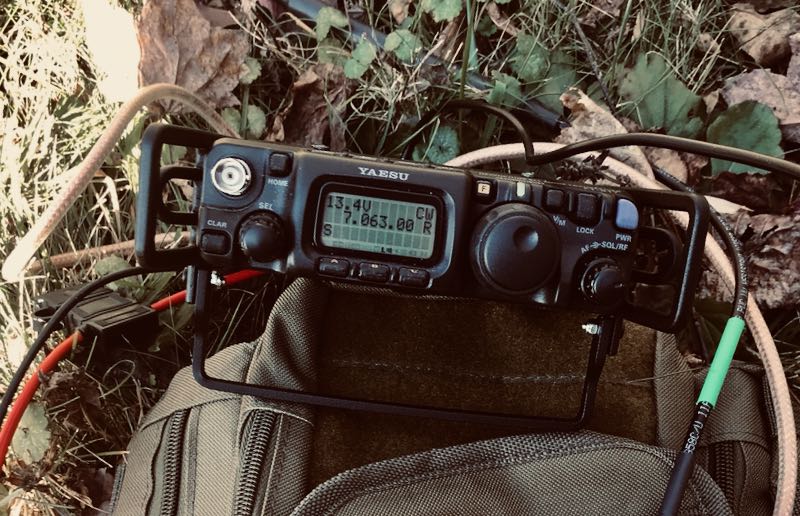
In fact, they knocked it out of the ballpark so hard, the radio is still in production two decades later and in demand under the model FT-818.
I sold my FT-817 in 2008 to raise funds for the purchase of an Elecraft KX1, if memory serves. My reasoning? The one thing I disliked about my FT-817 was its tiny front-facing display. When combined with the embedded menus and lack of controls, it could get frustrating at home and in the field.
I mentioned in a previous post that I purchased a used FT-817ND from my buddy, Don, in October, 2020. I do blame Andy for this purchase. Indeed, I hereby declare him an FT-817 enabler!
FT-817 Buddy board
When I told Andy about my ‘817ND purchase, he asked if I’d like to help him test the FT-817 Buddy board versions. How could I refuse?
Andy sent me a prototype of his Version 2 Buddy board which arrived in late November. I had to source out a few bits (an Arduino board, Nokia display, and multi-conductor CAT cable). Andy kindly pre-populated all of the SMD components so I only needed to solder the Arduino board and configure/solder the cable. I did take a lot of care preparing and soldering the cable, making sure there was no unintentional short between the voltage and ground conductors.
Overall, I found the construction and programming pretty straight-forward. It helped that Andy did a remote session with me during the programming process (thanks, OM!). Andy is doing an amazing job with the documentation.
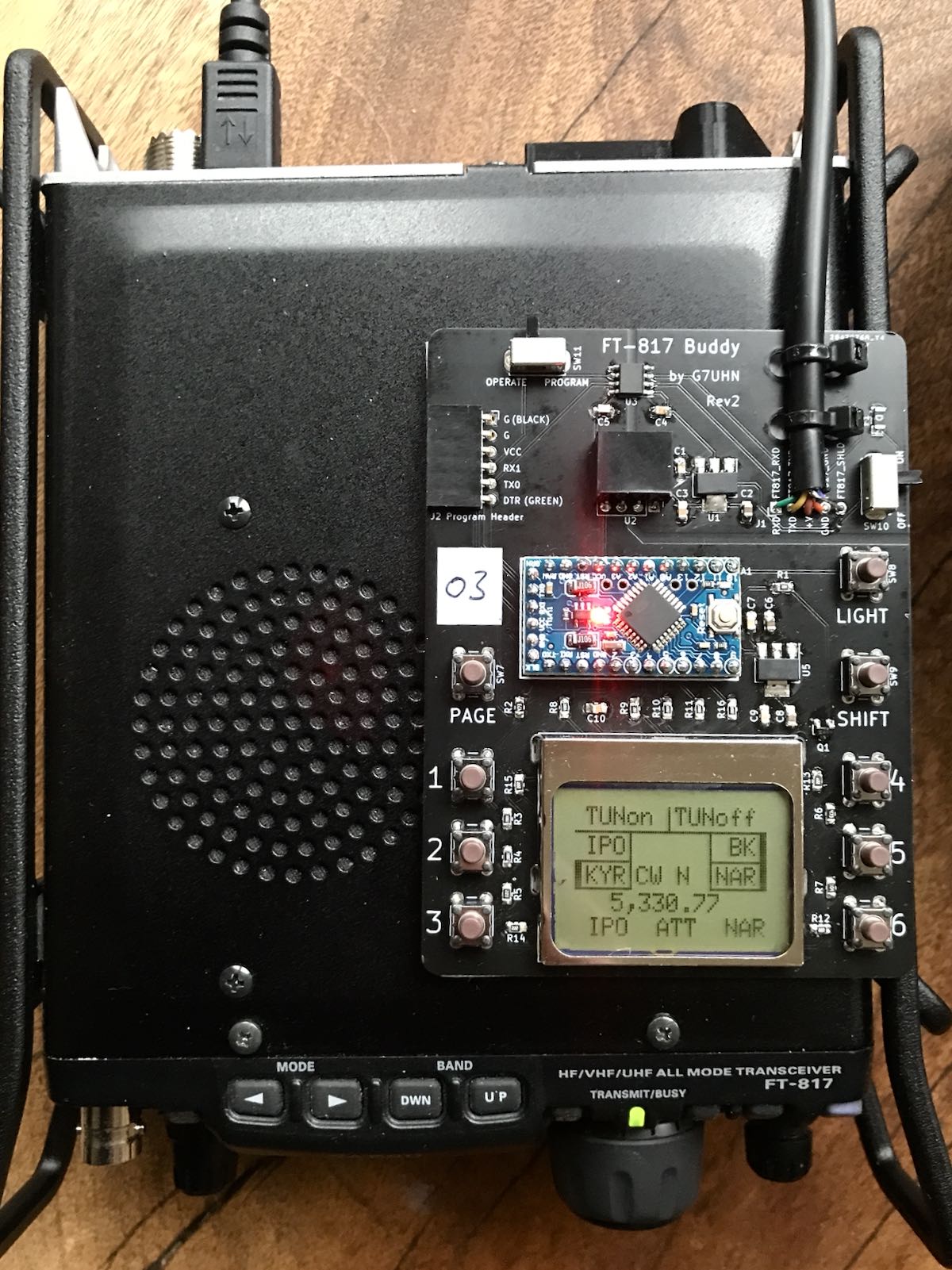 I do love how the board makes it easier to read the frequency and have direct access to important functions without digging through embedded menus. While there’s nothing stopping you from changing the program to suit you, Andy’s done a brilliant job with this since he’s an experienced FT-817 user.
I do love how the board makes it easier to read the frequency and have direct access to important functions without digging through embedded menus. While there’s nothing stopping you from changing the program to suit you, Andy’s done a brilliant job with this since he’s an experienced FT-817 user.
The Nokia display is very well backlit, high contrast, and easy very to read.
“Resistance is futile”
I mentioned on Twitter that, with the backlight on, the FT-817 Buddy makes my ‘817ND look like it was recently assimilated by The Borg.
Don’t tell any Star Trek captains, but I’m good with that.
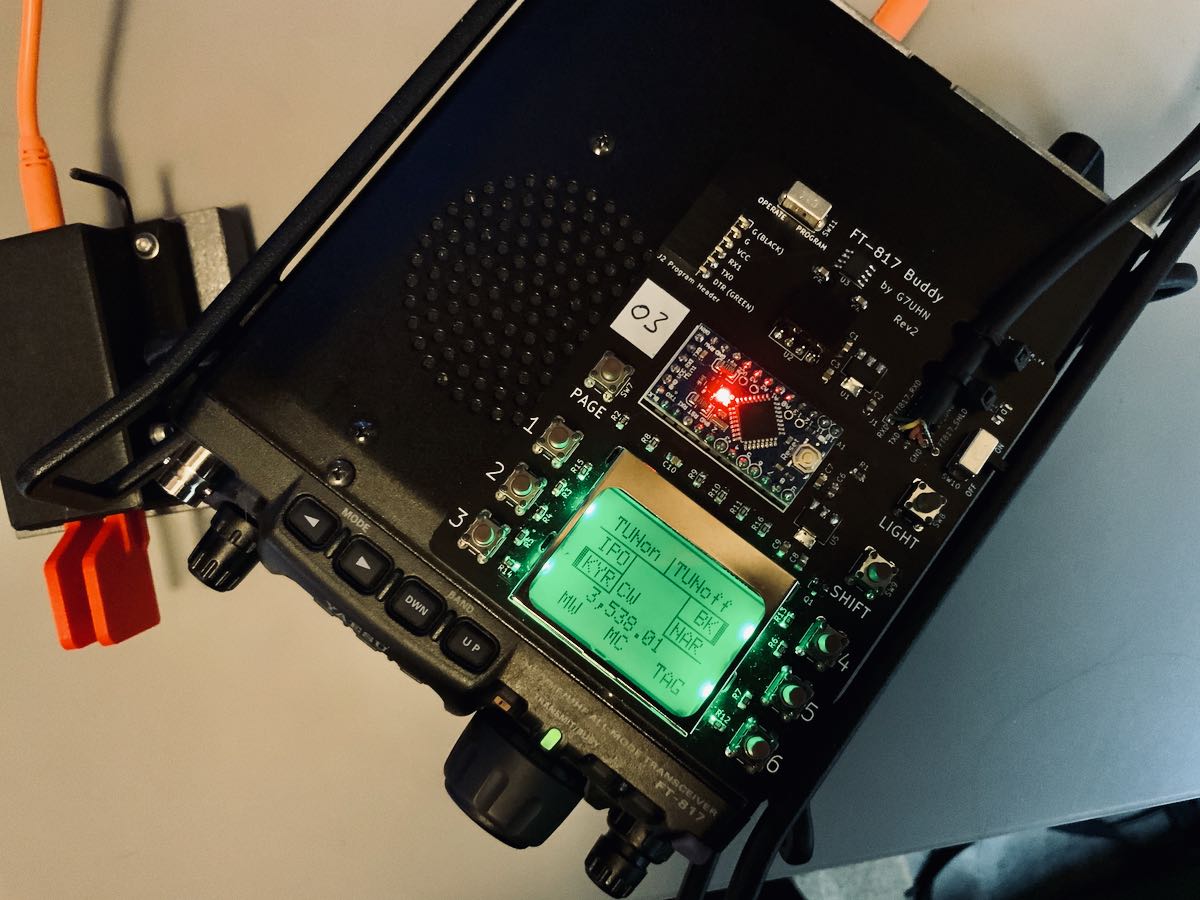 Andy has a rev3 board in the works and it sports something that will be a game-changer for me in the field: K1EL’s keyer chip!
Andy has a rev3 board in the works and it sports something that will be a game-changer for me in the field: K1EL’s keyer chip!
For more information about the FT-817 Buddy, check out Andy’s website. At time of posting, it’s not available yet, but as Andy says, “it’s nearly there!”
Of course, we’ll keep you updated here as well. Many thanks to Andy for taking this project to the next level. No doubt a lot of FT-817 users will benefit from this brilliant project!

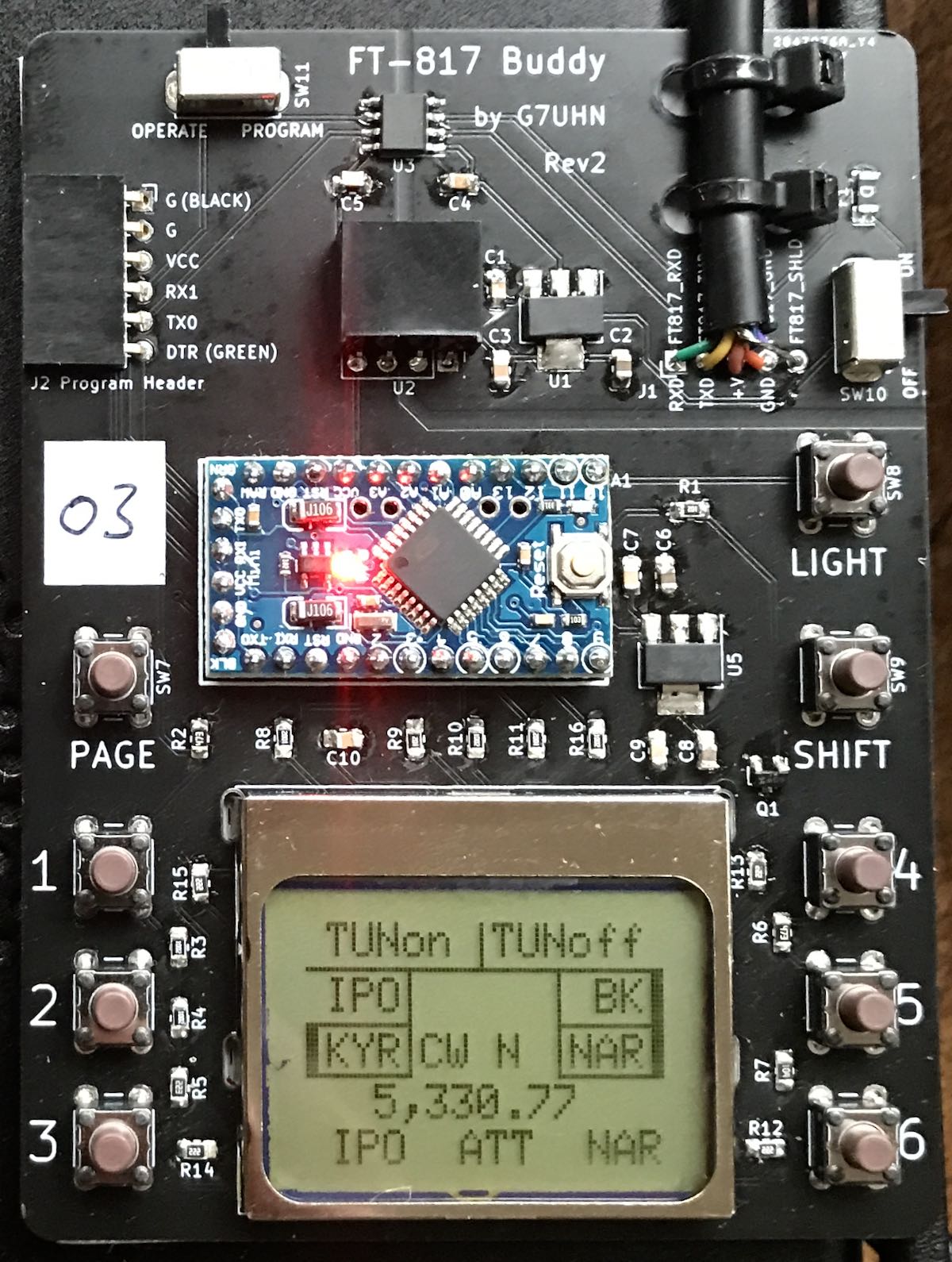
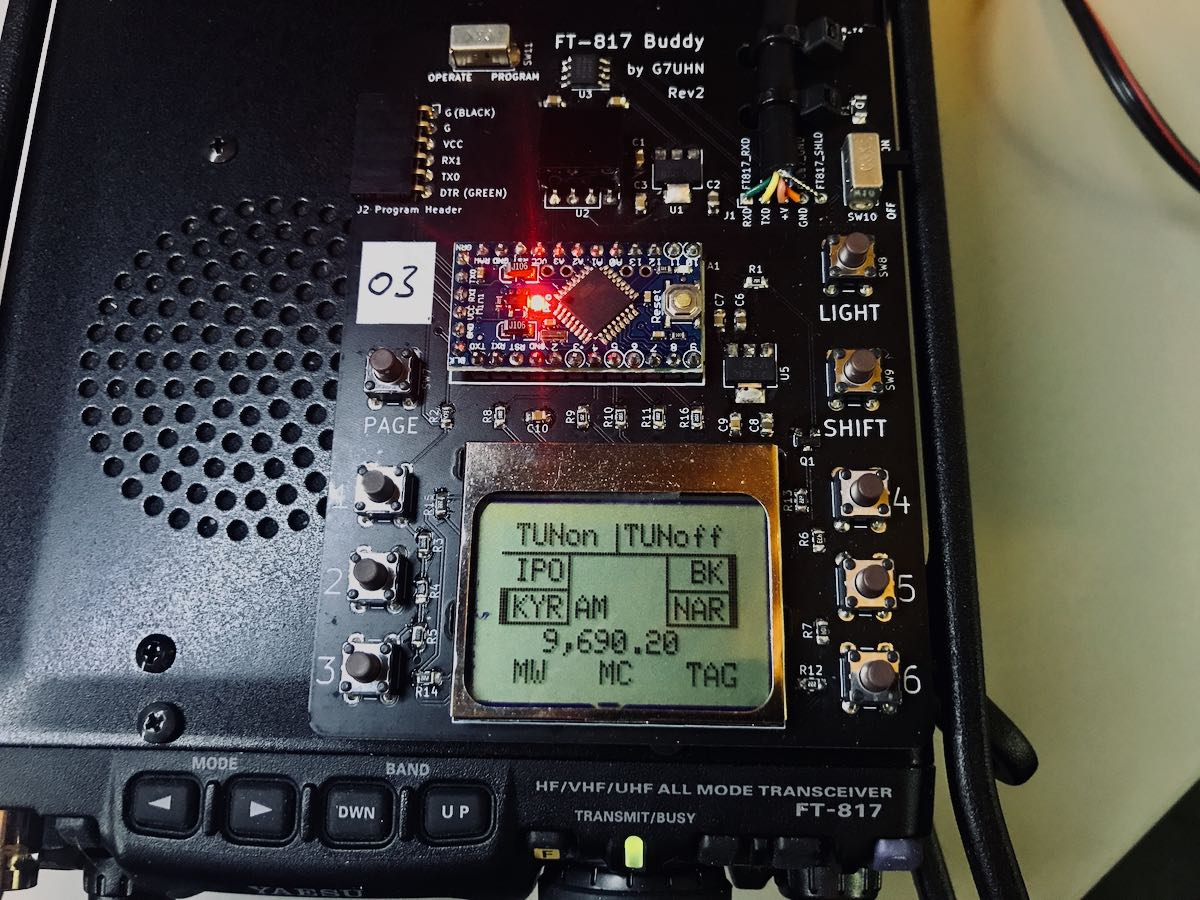
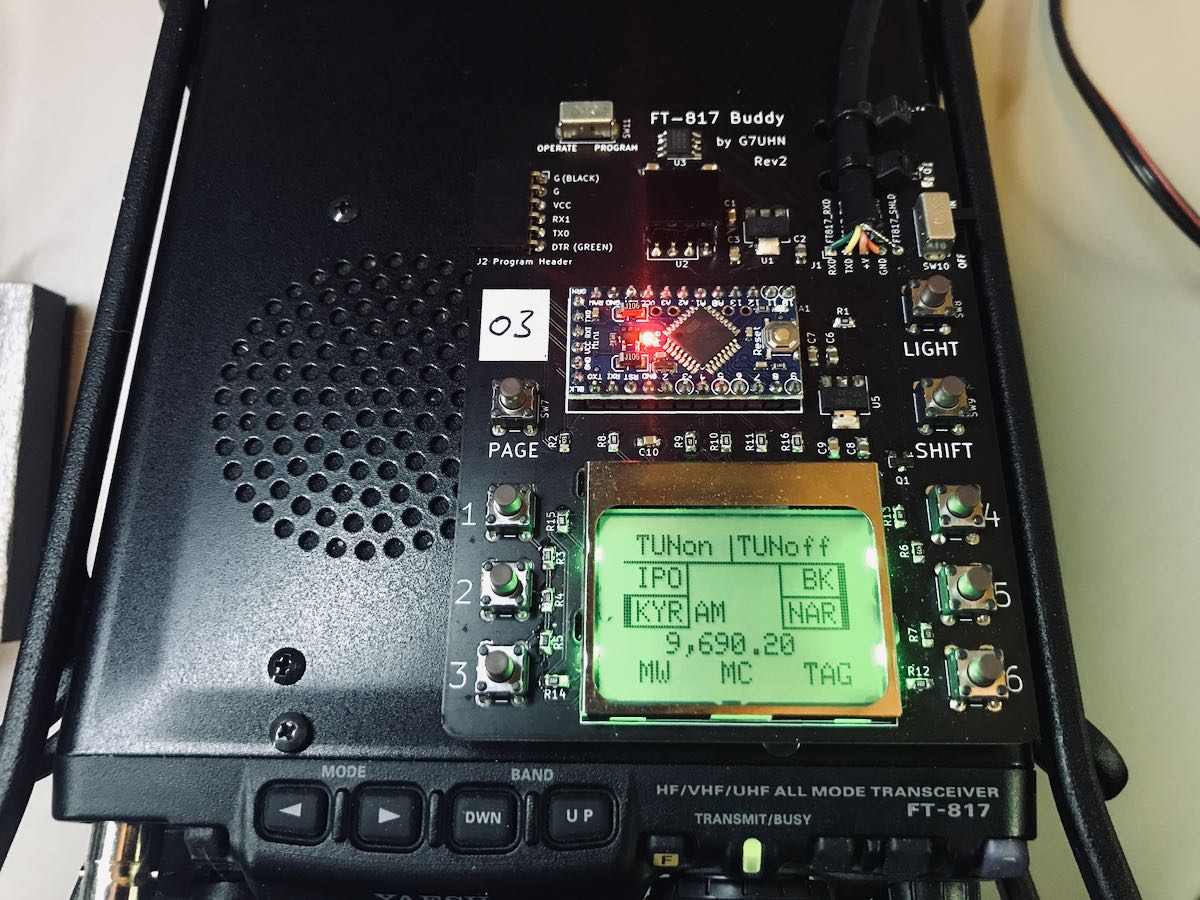
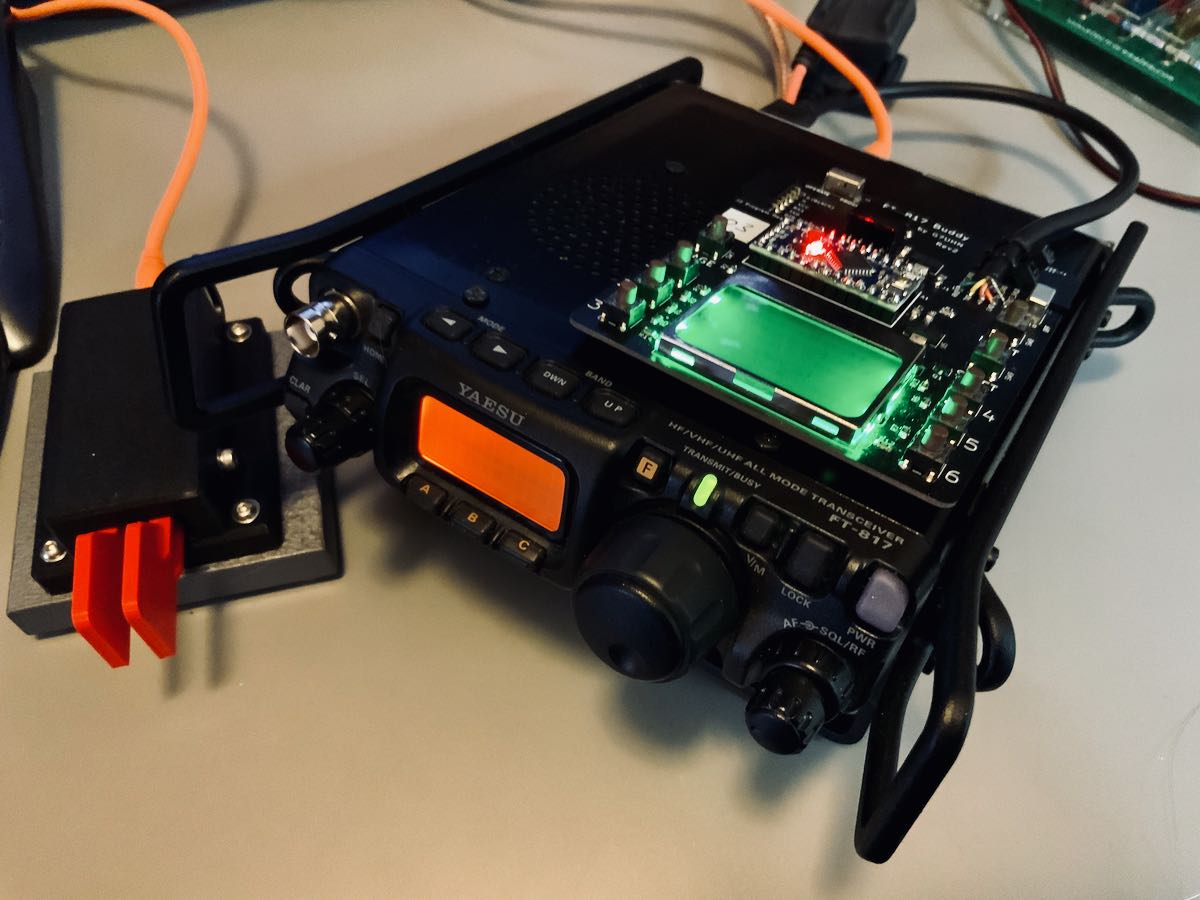
In my view, this is a very nice project that was created without looking to the left or to the right: You simply cannot integrate it in most carefully thought-out stations, especially portable stations.
This starts with the user interface: You can eigher look at the front of the FT-817 or at the FT-817 Buddy’s. Mechanically it does not fit at all.
A first improvement could be to separate display and switches from the rest to give the operator more flexibility, for example to tilt the display to minimize reflections and improve the viewing angle.
A good solution could be a housing as wide as the FT-817 and a bit longer than the FT-817. The front could slope to provide more space for display and operating elements. Chances are good that the operator would shield reflections from the display.
The rest of the housing could be used for a PA, an automatic matchbox, the power supply, an automatic antenna switch including a connection for an active RX antenna and common-mode yokes or what you like – all in one box.
Connect the FT-817 to the box by Velcro tape – see what OH8STN did. This way you could get one brick where you plug in antenna, microphone and key and you are redy to go.
Hi,
I simply love this borg-style extension of the FT-817. As you I have great love for my FT-817ND which I regularly use for both portable SOTA activations and satcom. Although the FT-817 buddy board seems to be not well suited to my portable operations in sometime bad weather conditions it looks like an excellent addition for shack-based operation 😉
Vy 73 de Alex, OE5LXR
Like you, Thomas, I bought one of the first FT-817s available almost 20 years ago when I moved to Hong Kong. In fact it is SN…0007, the James Bond edition (this was before the we knew about the Borg)! For at least 15 of those 20 years the FT-817 it was running 24/7 as one of the first Internet-connected receivers in the world. To the best of my knowledge it was the first one in Asia. Remote connection was done via Tripod:
https://vr2hf.tripod.com/
I used MicroSoft NetMeeting for both audio and access to the Ham Radio Deluxe rig control program. It was kind of a clunky system, but it worked amazingly well. I had hundreds of users every week from around the world for years.
For the last 12+ years or so the VR2HF remote FT-817 was available on http://www.GlobalTuners.com (formerly known as JavaRadio). Last summer I finally took it offline to be used for satellite work on RS-44 and other linear ham sats on SSB and CW. Other than needing a new rotary switch for tuning, which I have and will replace soon, it still working well after all this time. I am also going to add a switchable preamp for VHF/UHF satellite work when I replace the rotary switch. These preamps are available for a few dollars on AliExpress.
Bottom line: the Yaesu FT-817 was a real innovation for its time. It remains one of he most usable and desirable ham rigs available, a great value for the money and a real joy to use, even with my big fingers!